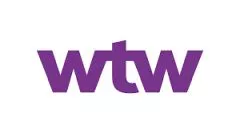As flood risk increases globally, organizations must identify and mitigate their potential exposures. Taking proactive measures are essential steps to build resilience against flood-related disasters.
Flooding threatens countries all around the world. WTW's H1 2024 natural catastrophe review points out that already this year we've seen Brazil hit by one of the worst-ever flood events on record and disastrous flooding across the Persian Gulf.
Eastern Africa has also faced destructive floods, and Europe has suffered too, with Germany, Belgium and the Netherlands forced to evacuate towns and villages.
The evidence suggests that flooding is becoming more common, with catastrophic results for both people and property. The World Bank says 1.8 billion people – almost a quarter of the world's population – now live in an area that is at risk of a major flooding event.
Flooding is a threat that organizations should now be thinking about and preparing for.
What does flooding mean?
Flooding is the temporary submersion of dry land by water from heavy rainfall, overflowing rivers or coastal surges. Floods in urban areas tend to cause the most concern, but flooding can happen anywhere, including in arid and desert environments, as well as on saturated ground.
In practice, there are three main types of flood:
- Flash floods are caused by very heavy rain
falling over a short period, typically a few hours. While they can
happen anywhere, they are particularly problematic in built-up
locations. In cities, water runoff from roads and concrete surfaces
can overwhelm drainage systems, leading to rapid flooding.
Additionally, flash floods can occur when the ground cannot absorb the sudden influx of water, such as in arid regions, drought-affected areas, or already saturated ground. Flooding doesn't necessarily take place where the rain is heaviest – water may flow from higher ground. - River floods occur when a river bursts its banks due to heavy rainfall, melting snow or obstructions that block the river's usual course. Locations close to rivers, known as the floodplain, are at higher risk.
- Storm surges are a result of water swells, typically driven by low atmospheric pressure and strong winds. These can inundate the land and flood coastal areas.
A number of studies1 have shown that climate change is increasing flood risk. Alongside sea-level rise exacerbating coastal flooding, higher average temperatures everywhere lead to generally warmer air, which holds more water and therefore increases the intensity of rainfall.
In regions where climate change is driving prolonged periods of drought, the soil can become dry and compacted, reducing its ability to absorb rainfall effectively. Rising sea levels increase the likelihood and impact of coastal flooding.
Ongoing urbanization is exacerbating the problem. It has meant an increase in the amount of land covered by impervious surfaces such as concrete and asphalt. These prevent water from naturally infiltrating the ground, thus enhancing runoff and the likelihood of floods.
A recent world bank report highlighted increased development in areas at risk to flooding is further adding to overall risk.2
Quantifying flood risk
Given these challenges, it has never been more vital for organizations to identify and quantify the flooding risks they face. This will help them to understand the extent of their vulnerability and to take appropriate action accordingly. The good news here is that a variety of tools and support are available to help organizations protect themselves.
First, hazard mapping tools can be used to plot flood risk information on a map. With accurate geolocation data, it is possible to make detailed maps, with risk varying considerably over small areas.
For example, WTW's Global Peril Diagnostic tool, which uses data from Munich Re can help to identify flood exposure at one particular location, or across a portfolio of locations. Many government agencies also publish flood hazard maps that provide valuable information on flood zones and historical events.
Next, catastrophe modeling tools make it possible to predict the likely financial losses from flooding that a location – or portfolio of locations – is exposed to.
These combine flood hazard data and information such as location characteristics, the organization's schedule of value and the property's vulnerability to estimate potential losses.
The more comprehensive – and accurate – the exposure data, the better informed these estimates will be.
Armed with the outputs from these tools, WTW's natural catastrophe specialists help organizations to assess whether the insurance cover they currently have in place is adequate. And when insurers have accurate loss estimates available, they may be able to keep premiums lower, since the data will reduce uncertainty.
Specialist advisers can also help with strategic risk consultancy. This often includes work such as hazard mapping and catastrophe modeling, and provides additional support for organizations considering their options for risk management, mitigation and insurance.
For example, a UK business aimed to quantify the flood risk at its most exposed sites in order to understand its potential losses, including business downtime, and how best to reduce risk.
Analysis based on detailed flood maps and other data sources, as well as information on building vulnerability and local flood defenses – where improvements were planned – generated a probable maximum loss for each location.
At one site, flood alleviation works reduced this figure by around 35%. The exercise culminated in a cost-benefit analysis of possible risk mitigation measures, enabling the business to identify which strategies to prioritize. It chose to invest in protection including flood barriers, pumps and dehumidifiers, as well as mobile generators to reduce recovery time.
The role of parametric insurance
Insurance products have a crucial role to play in helping organizations to protect themselves financially against flood risk.
With the data from flood mapping and catastrophe modeling tools – including deterministic and probabilistic estimates for property damage, business interruption and other losses – organizations can assess how much cover they need and decide what level of premiums they are comfortable with paying.
This is often provided by traditional insurance products, which covers mainly covers property damage and associated business interruption through a lengthy loss adjustment process.
However, parametric insurance solutions can provide valuable protection when traditional insurance falls short of clients' requirements.
With flooding risk on the increase, parametric insurance can complement traditional insurance by covering gaps left by traditional policies – perhaps where certain types of risk are not covered, or where higher excesses or lower limits apply.
Parametric insurance pays a set amount to the policyholder if a specific threshold of an event happening is met.
For example, a parametric policy may pay out if a certain amount of rain is measured to fall at a particular location, or if satellite imagery determines that flood water is present at an insured area. In this way, the structure of a parametric insurance solution and any pay-out is fully pre-determined at the start of the contract.
As such, parametric insurance can be more transparent than traditional policies – policyholders know exactly what they will receive in specific circumstances.
Also, claims are usually settled quickly as no formal loss adjustment process is required. Measurements of the event are simply cross-referenced with how the loss is calculated in the contract, and payments can then be swiftly transferred.
The organization can then use parametric pay-outs as it sees fit – including for costs such as non-damage business interruption or supply chain disruption, which traditional property insurance may not cover.
One key consideration before obtaining a parametric policy is basis risk – the difference between the pay-out from the parametric contract and the amount that a client may require.
This may occur if losses are higher than a parametric contract calculates. Specialist WTW brokers review and quantitatively analyze parametric policies to minimize basis risk and ensure high quality cover for all clients.
Despite basis risk, the benefits of parametric insurance can often outweigh these concerns, and organizations across many lines of business purchase parametric insurance.
One example of a client we have helped is a large pharmaceutical company in the US, which was faced with higher excesses because of steadily increasing flood risk. The business opted for a parametric solution to reinsure its exposure; the policy pays out if a storm surge is greater than 4.9 meters, as verified by measurements from the closest National Oceanic and Atmospheric Administration station.
WTW has independently analyzed this choice of 4.9 meters to minimize basis risk and ensure that pay-outs according to the client's needs are met in the event of a flood.
In practice, of course, every organization faces different considerations. The most appropriate way to manage risk will vary from one organization to the next, depending on its individual circumstances. The starting point is to assess exposure – that will define the right response.
Footnotes
1. Climate change impact on flood and extreme precipitation increases with water availability.Return to articleundo
2. Global evidence of rapid urban growth in flood zones since 1985.Return to articleundo
The content of this article is intended to provide a general guide to the subject matter. Specialist advice should be sought about your specific circumstances.





